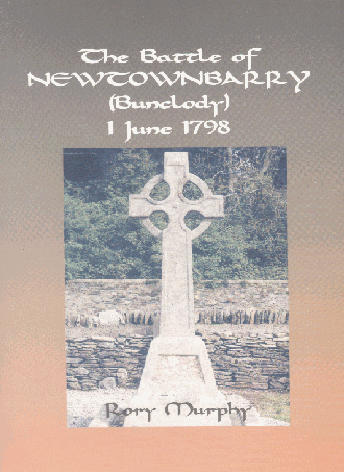| Page
3 of 3 The economic factor also greatly influenced events. The price for barley, the principal cash crop in Co Wexford, had plummeted from 26/- to 6/-per barrel. It was a labour intensive crop with only the reaping hook and the flail to harvest it, while the preparation of the ground, sowing and weeding were laborious, time consuming jobs, requiring a lot of manual labour. The Malt Houses, numerous in the Bunclody area, were sources of much employment. They were being shut down one by one in the economic climate of the time and the poverty of unemployment was added to the woes of the peasants. As ever in times of great distress, the dark side becomes foremost; ancient wrongs are remembered and refocused into the public consciousness until the hopelessness, that sometimes precedes mass fury, gripped the people. The peasantry were being goaded not alone by the local Yeomanry and the Militia but, tragically, in many areas by a less than disciplined army. The attempted landing of the French forces at Bantry Bay in 1796 had shown the forces of occupation how vulnerable they were to invasion with their plethora of scattered small garrisons, many of whom were based in or on the ascendancy estates. Had the French managed to land at Bantry Bay it is almost certain that their forces would have taken Cork and swept on to Dublin largely unimpeded. If ever a scene was set for insurrection, it was so in Ireland in 1798, as it had been in America in 1776 and France in 1789. It needed only a signal action to set the tinderbox alight. The incident at Bookey's Stream followed by the burning of Boolavogue Chapel did just that. |
|
|
The cover of the
book from which the above extract was taken. It depicts the cross in the old graveyard where the remains of some of those lost in the 1798 Bunclody battle were moved to following their unearthing during the bridge widening. |
